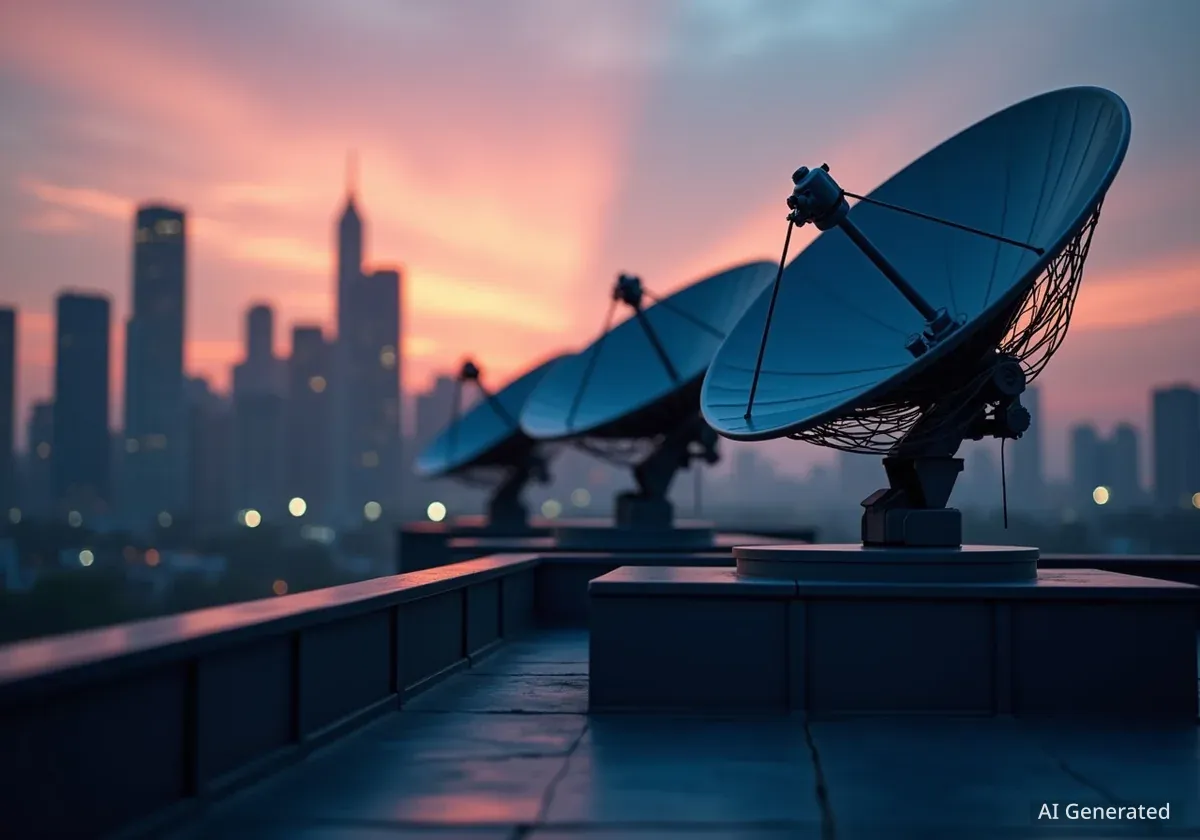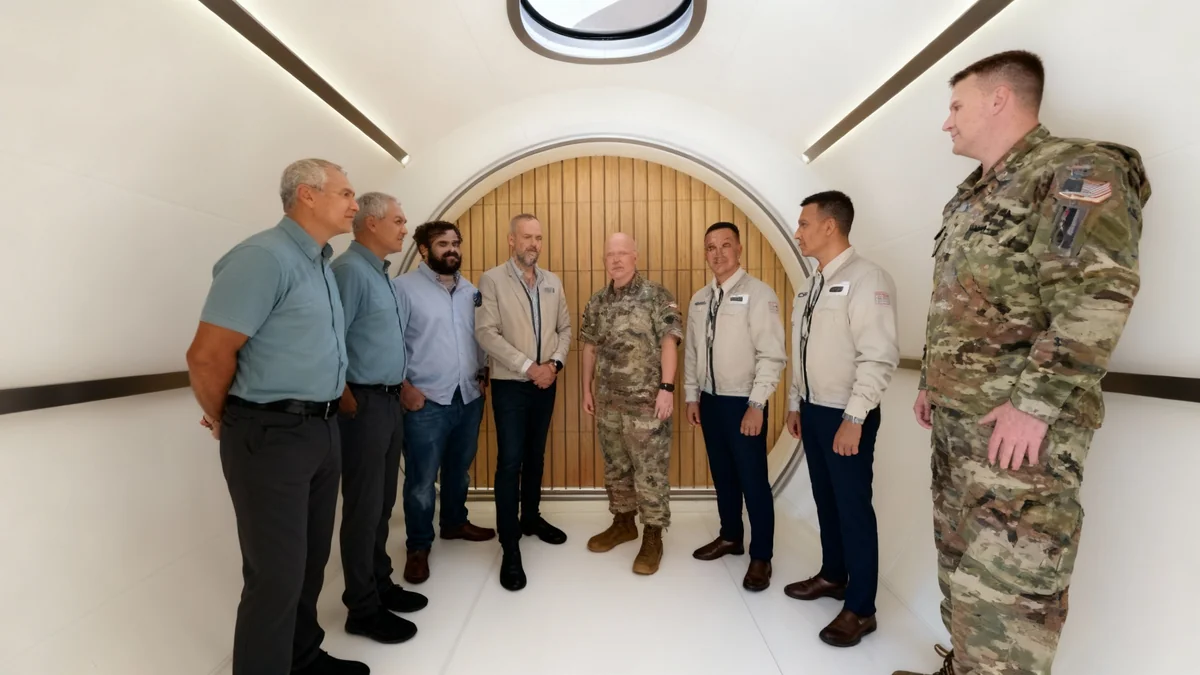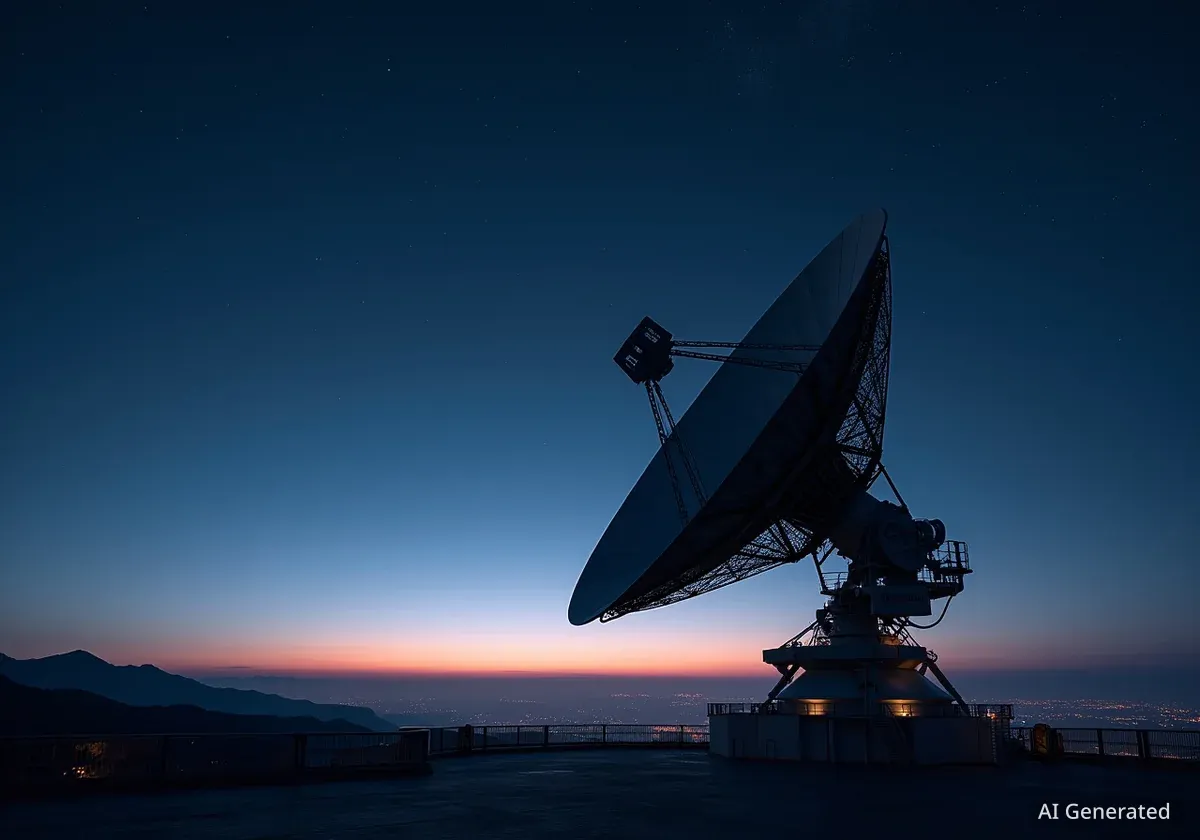The Federal Communications Commission (FCC) has unveiled a significant agenda for what it has designated 'Space Month' in October 2025. The agency is set to vote on two sweeping proposals designed to modernize the regulatory framework for the rapidly growing commercial space industry in the United States. These initiatives aim to accelerate innovation by streamlining licensing processes and optimizing the use of critical radio spectrum.
Key Takeaways
- The FCC will vote on two major proposals on October 28, 2025, to update space and satellite regulations.
- One proposal aims to replace the existing Part 25 rules with a new, streamlined Part 100 to speed up licensing.
- Key changes include extending license terms to 20 years and creating an expedited application process.
- A second proposal focuses on improving shared use of upper microwave spectrum bands between satellite services and terrestrial 5G networks.
Modernizing Space and Satellite Licensing
The first major proposal is a Notice of Proposed Rulemaking (NPRM) intended to completely overhaul the FCC's licensing procedures for space-based systems. According to the FCC, the primary goals are to increase the speed of license processing, provide greater predictability for applicants, and offer more flexibility for innovation.
This effort is a direct response to the dramatic increase in the scale and pace of the modern space economy, which has outgrown the existing regulatory framework.
Replacing an Outdated Framework
The current rules, known as Part 25, govern satellite services. The FCC's proposal suggests replacing this entire section with a new, modernized set of regulations called Part 100. The objective is to eliminate outdated requirements and create a more organized and user-friendly framework for the space industry.
An Assembly Line for Licenses
A central feature of the proposed reform is the creation of an expedited licensing system, described as a "Licensing Assembly Line." This system would establish clear, objective criteria for applications. If an application meets these standards, it would be presumed to be in the public interest, allowing for a much faster review and approval process.
This change is designed to reduce the regulatory delays that can hinder the deployment of new satellite constellations and services. By creating a predictable path for compliant applications, the FCC hopes to encourage more investment and innovation.
Longer Licenses and Simpler Modifications
To provide greater regulatory certainty for companies making long-term investments, the FCC is considering extending license terms. The proposal seeks comment on increasing the standard term for most space stations and earth stations from 15 years to 20 years. Satellites licensed under the small satellite rules would see their terms extended from the current six-year period.
Furthermore, the proposal aims to expand the list of system modifications that operators can make without needing prior FCC approval. This would allow companies to upgrade and adjust their systems more quickly, reducing their reliance on Special Temporary Authority (STA) requests for testing and operational changes.
The proposed changes aim to support emerging business models like Ground-Station-as-a-Service (GSaaS), where companies provide earth station services to multiple satellite operators.
Streamlining Earth Station Approvals
The current rules often require applicants to specify geographic areas for their earth stations, a hurdle for the growing GSaaS industry. The new proposal considers a shift to a predominantly nationwide blanket license approach for earth stations.
Under this model, an operator could obtain a baseline license without first identifying a specific satellite to communicate with. Adding or removing satellite points of communication would then be handled through a simple notification process rather than a lengthy license modification application.
Financial and Administrative Changes
The NPRM also includes several proposals to streamline financial requirements. It suggests eliminating surety bond requirements for new Geostationary Orbit (GSO) satellites. For Non-Geostationary Orbit (NGSO) systems, the bond requirement would be limited to operators with 200 or more authorized satellites.
Additionally, the FCC proposes allowing for conditional grants in certain situations to provide more flexibility. One such grant would allow eligible applicants to begin operations on an unprotected basis before a final license is issued. Another key proposal would require satellite operators to share Space Situational Awareness (SSA) data to improve orbital safety.
Optimizing Crowded Airwaves
The second major proposal addresses the increasingly crowded upper microwave frequency bands. These bands, including 24 GHz, 28 GHz, and others, are critical for both terrestrial 5G services and satellite earth stations. The FCC is seeking to facilitate more intensive use of this spectrum by both types of users.
Revisiting the Spectrum Frontiers Order
The current sharing rules were established in the 2016 Spectrum Frontiers Report and Order. At the time, regulators assumed intensive terrestrial 5G use and relatively light satellite use. The rapid growth of both sectors has changed this dynamic, prompting the FCC to reevaluate the rules to ensure efficient sharing.
New Approaches to Spectrum Coordination
The NPRM seeks comment on whether the current technical rules are still appropriate. One key proposal would allow terrestrial 5G licensees to voluntarily negotiate agreements with satellite operators. Under such an agreement, a satellite operator could deploy new earth stations in a specific geographic area without having to meet the standard interference protection criteria for 5G services.
The agency is also exploring ways to make the earth station application process less burdensome. This includes reducing the initial technical information required from applicants and adopting "safe harbor" exceptions for certain protection criteria.
Revising Technical and Siting Rules
The FCC is also considering changes to the specific criteria that govern where earth stations can be located. Proposed revisions include:
- Broadening the definition of "earth station collocation" to allow 5G and satellite operations to be physically closer.
- Increasing or eliminating the numerical limits on how many earth stations can be located in a single county or economic area.
- Considering alternatives to the "first-in-time" rules that currently prioritize the first licensed user in an area.
Perhaps the most forward-looking proposal is the exploration of a database-driven automated interference model. This system would allow for more dynamic and precise spectrum management, moving away from blanket rules. It could involve appointing third-party coordinators to oversee spectrum sharing between 5G and satellite operations on a more granular level.
Next Steps for the Space Industry
The FCC is scheduled to hold an open meeting on October 28, 2025, to vote on these two significant rule-making proposals. If adopted, these changes could represent the most substantial update to U.S. space and satellite regulations in a generation.
The proposals reflect the agency's effort to adapt to a new era of space commercialization, characterized by large satellite constellations, new service models, and increasing demand for radio spectrum. The outcome of the October vote will be closely watched by the entire space and telecommunications industry.





